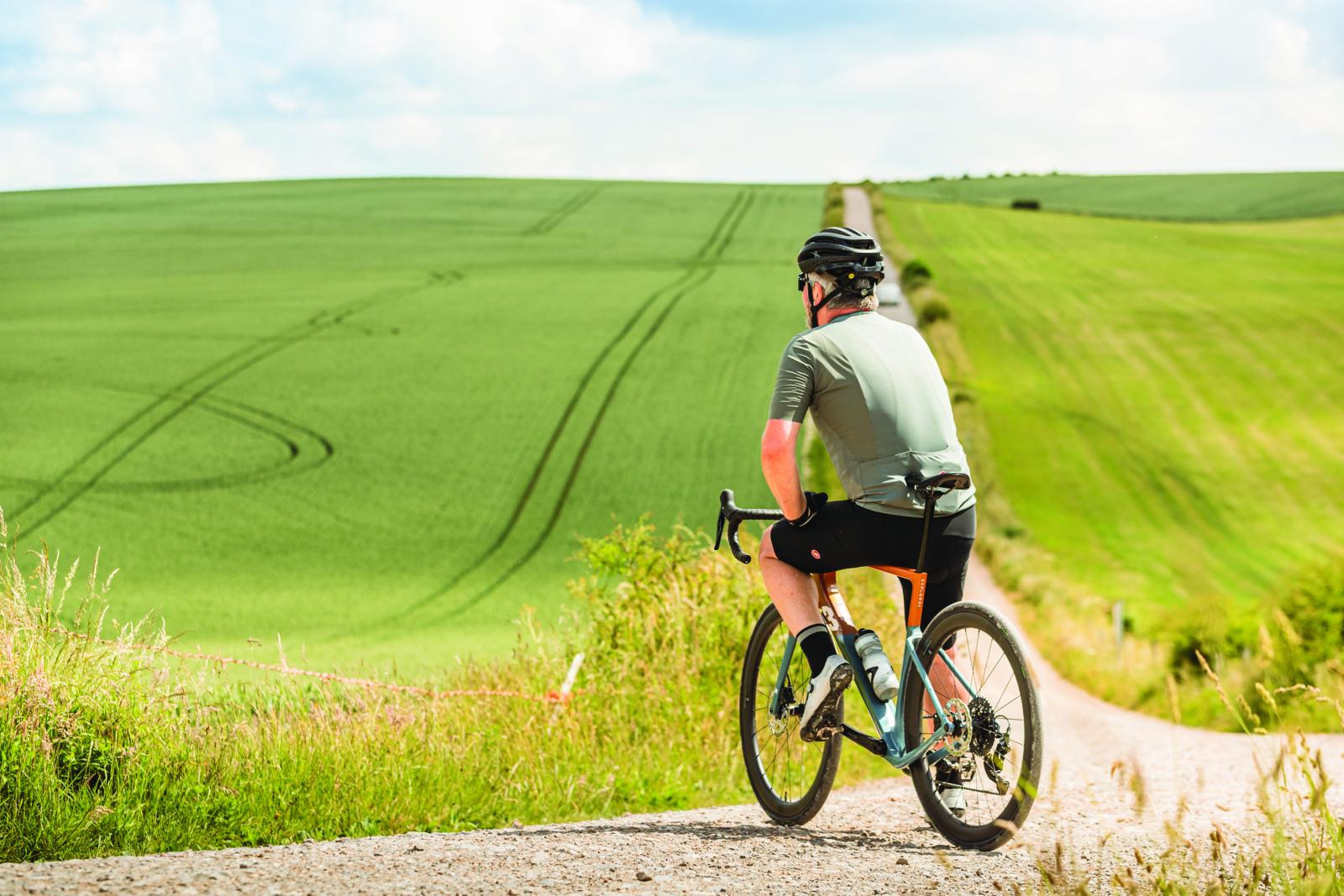Lapierre’s Xelius frameset is the same as the one used by FDJ’s pro tour team – that means a pairing of a sub-kilo frame and 390g fork. That's light for this or any other price.
- HIGHS: Fast handling that’s plenty precise too
- LOWS: A set of 25c tyres would help comfort levels
The frame incorporates fully integrated cabling, making it electronic gear-ready and nicely futureproofed. This finish is immaculate, with the bold livery hiding some innovative features. The top tube arches forward and turns from a flattened oval into a ridged diamond shape at the head-tube.
The head-tube itself is oversized and tapered as we’d expect of a pro-level bike. The lightweight fork is broad shouldered and muscular, offering both maximum stiffness and clearance for bigger tyres should you want to fit them.
The XL frame features a 74 head angle and a 72 seat; the reason for this slight adjustment over the parallel 73’s on the smaller sizes is to maintain the race-short wheelbase to keep the bike's handling sharp. It works: the Xelius has swift reactions, but thankfully it's never so instant as to become unstable – you come away from the ride with an great impression of precision.
The Xelius climbs well, which is to be expected. A quality lightweight chassis such as this will always shine even if loaded with components from the middle ground. The Lapierre's lightness of touch encourages out-of-the-saddle efforts and the 12-28 50/34 combination helps maintain high cadence ascents, even on the steepest slopes.
As we normally expect of a bike derived from the pro ranks, the frame isn’t the most comforting. It's firm and stiff – great character traits for a bike that’s built to deliver speed. The Xelius is far from uncomfortable though – thanks to a decent saddle and carbon post setup the back end offers enough to keep you isolated from the worst road surface vibration.
Up front you can feel a liitle more in the way of buzz, though that could easily be countered by a switch in tyres. Mavic’s Aksion tyres are part of the package, but their 23c nominal width is a little generous. Their slim dimensions feel rapid enough and have decent all-weather traction, but they don’t offer much in the way of compliance to assist you comfort wise. A set of 25c tyres would transform the bike's comfort levels.
We tested the higher 200 model in 2013, and though we were impressed with the bike, we did have criticisms over its spec. This 2014 100 model doesn’t suffer from the same issues. The wheels are exactly what we’d expect at the price, as is the Shimano 105 groupset, and the Deda cockpit is the most popular setup at this price band too.
The quality saddle and carbon post are also a decent choice, and it's only the non-series Shimano brakes and 12-28 Tiagra cassette that could be considered downgrades. Thankfully, though, this isn't to the detriment of performance: the soft cartridge pads fitted provide a decent level of feel and competent wet-weather bite, and we were hard pushed to notice the Tiagra substitute at the back as the shift stayed consistently good.
Overall the Xelius performs well as a serious race bike – though it's also so firm and aggressive in its ride position that it couldn't be considered a real asset to endurance riders. In an ideal world it’d come with bigger volume tyres but, for a bike at this price, that’s the only minor gripe we could find.
This article forms part of Cycling Plus magazine's Bike of the Year 2014 Awards, which is on sale now. Cycling Plus is available on Apple Newsstand and Zinio.

